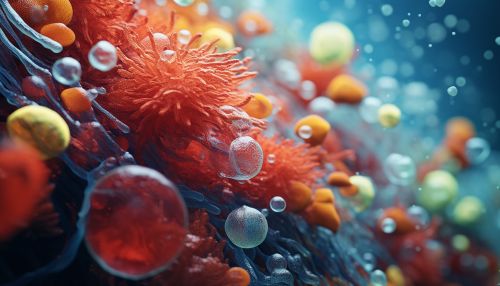Biodegradation
Introduction
Biodegradation is a natural process that involves the breakdown of substances by microorganisms, such as bacteria and fungi. This process plays a vital role in the carbon cycle, the nitrogen cycle, and other nutrient cycles. Biodegradation can be applied in waste management and environmental remediation.


Process of Biodegradation
Biodegradation occurs when organic substances are broken down by living organisms. The process can be categorized into two types: aerobic and anaerobic. In aerobic biodegradation, microorganisms use oxygen to break down the substance, while in anaerobic biodegradation, the breakdown occurs without the use of oxygen.
Aerobic Biodegradation
Aerobic biodegradation is the process of breaking down organic matter using oxygen. Microorganisms such as bacteria and fungi use the organic material as a source of energy and nutrients, breaking it down into simpler substances such as carbon dioxide, water, and other by-products.
Anaerobic Biodegradation
Anaerobic biodegradation occurs in the absence of oxygen. In this process, microorganisms break down organic matter into simpler substances such as methane, hydrogen, and carbon dioxide. This process is slower than aerobic biodegradation and is often associated with the production of foul odors due to the production of gases like hydrogen sulfide.
Factors Affecting Biodegradation
Several factors can affect the rate and extent of biodegradation. These include the nature of the organic substance, the type of microorganisms present, environmental conditions, and the availability of nutrients.
Nature of the Organic Substance
The chemical structure of the organic substance can significantly affect its biodegradability. Substances with simple structures, such as sugars and amino acids, are easily biodegradable. In contrast, substances with complex structures, such as synthetic polymers, are more resistant to biodegradation.
Type of Microorganisms
Different microorganisms have different capabilities in terms of the substances they can degrade. Some microorganisms can degrade a wide range of substances, while others can only degrade specific types of substances. The presence of these specific microorganisms can significantly affect the rate of biodegradation.
Environmental Conditions
Environmental conditions such as temperature, pH, and moisture content can also affect the rate of biodegradation. Optimal conditions can enhance the activity of microorganisms, thus speeding up the biodegradation process.
Availability of Nutrients
The availability of nutrients can also affect the rate of biodegradation. Microorganisms require nutrients such as nitrogen, phosphorus, and sulfur for their growth and metabolism. The absence of these nutrients can limit the growth of microorganisms, thus slowing down the biodegradation process.
Applications of Biodegradation
Biodegradation has several applications, particularly in waste management and environmental remediation.
Waste Management
In waste management, biodegradation is used to break down organic waste materials. This process reduces the volume of waste and transforms it into useful products such as compost. The compost can then be used to improve soil fertility and structure.
Environmental Remediation
In environmental remediation, biodegradation is used to clean up contaminated environments. This process, known as bioremediation, involves the use of microorganisms to degrade pollutants into less harmful substances.
Conclusion
Biodegradation is a crucial process in nature that helps in the recycling of nutrients and the cleaning up of pollutants. Understanding the factors that affect biodegradation can help in optimizing its applications in waste management and environmental remediation.
